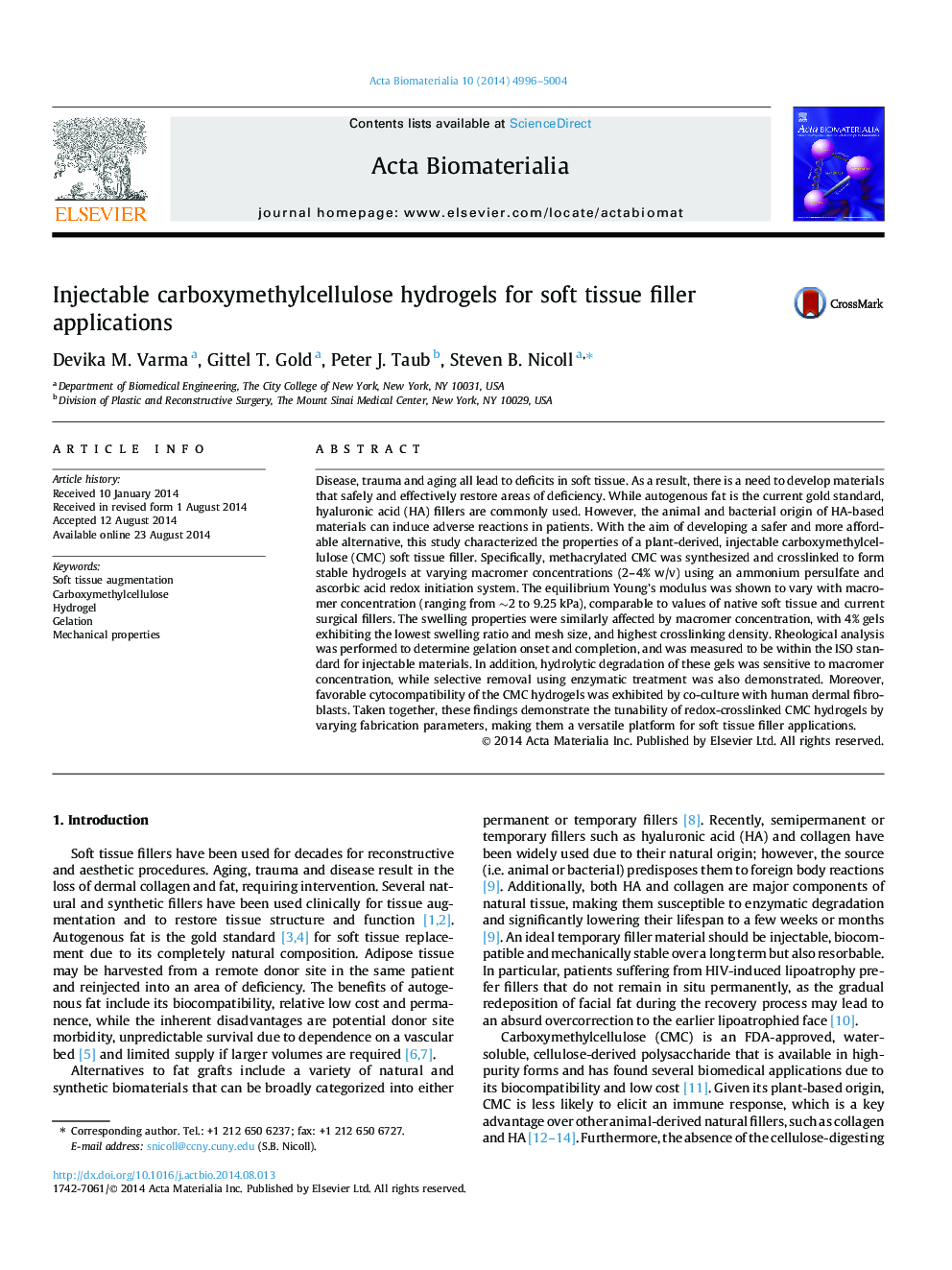| Article ID | Journal | Published Year | Pages | File Type |
|---|---|---|---|---|
| 6483834 | Acta Biomaterialia | 2014 | 9 Pages |
Abstract
Disease, trauma and aging all lead to deficits in soft tissue. As a result, there is a need to develop materials that safely and effectively restore areas of deficiency. While autogenous fat is the current gold standard, hyaluronic acid (HA) fillers are commonly used. However, the animal and bacterial origin of HA-based materials can induce adverse reactions in patients. With the aim of developing a safer and more affordable alternative, this study characterized the properties of a plant-derived, injectable carboxymethylcellulose (CMC) soft tissue filler. Specifically, methacrylated CMC was synthesized and crosslinked to form stable hydrogels at varying macromer concentrations (2-4% w/v) using an ammonium persulfate and ascorbic acid redox initiation system. The equilibrium Young's modulus was shown to vary with macromer concentration (ranging from â¼2 to 9.25Â kPa), comparable to values of native soft tissue and current surgical fillers. The swelling properties were similarly affected by macromer concentration, with 4% gels exhibiting the lowest swelling ratio and mesh size, and highest crosslinking density. Rheological analysis was performed to determine gelation onset and completion, and was measured to be within the ISO standard for injectable materials. In addition, hydrolytic degradation of these gels was sensitive to macromer concentration, while selective removal using enzymatic treatment was also demonstrated. Moreover, favorable cytocompatibility of the CMC hydrogels was exhibited by co-culture with human dermal fibroblasts. Taken together, these findings demonstrate the tunability of redox-crosslinked CMC hydrogels by varying fabrication parameters, making them a versatile platform for soft tissue filler applications.
Related Topics
Physical Sciences and Engineering
Chemical Engineering
Bioengineering
Authors
Devika M. Varma, Gittel T. Gold, Peter J. Taub, Steven B. Nicoll,
